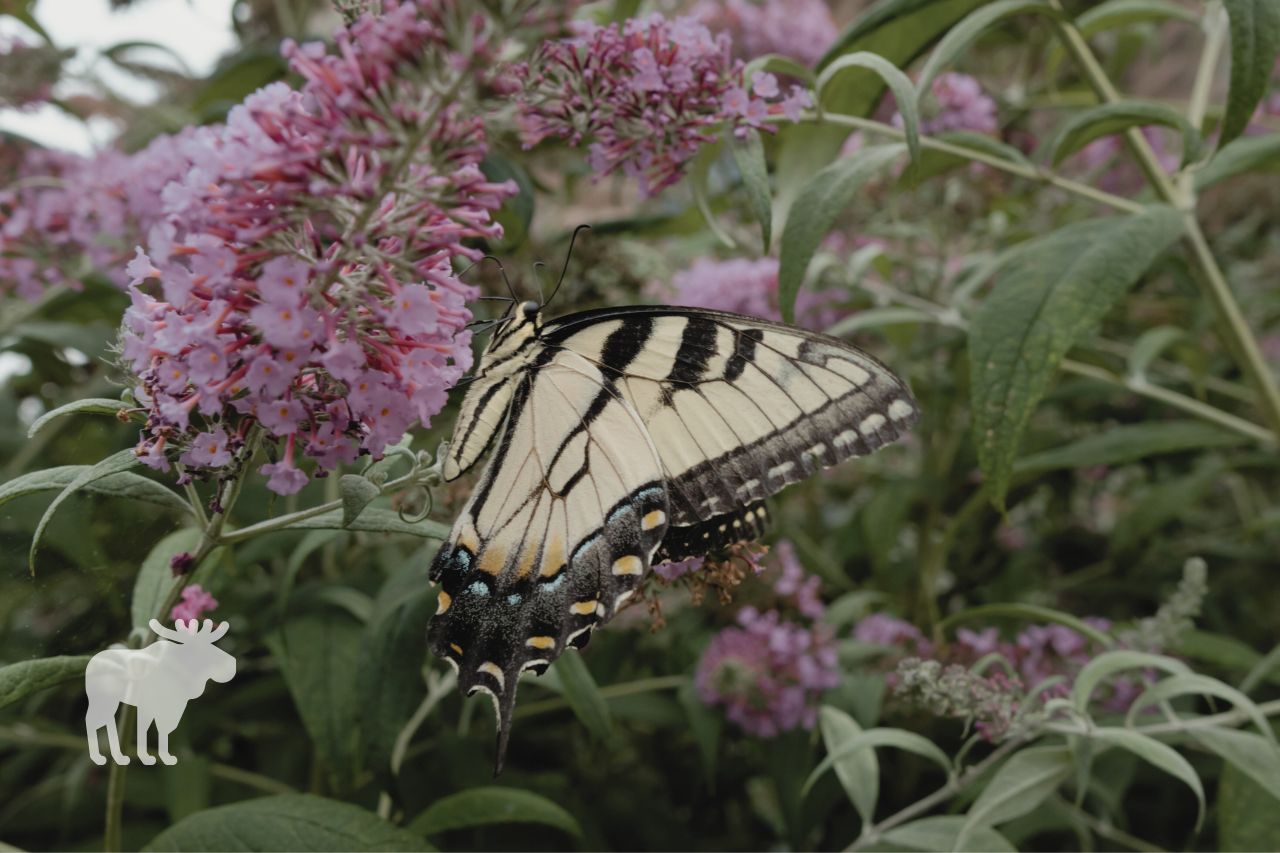Do you love butterflies? Are you wondering how to get more of them to visit your yard? Perhaps you are wondering about specific types of butterflies, like tiger swallowtails. How do you attract tiger swallowtails to your yard, and how do you get them to stick around? Keep reading as we answer this and other questions!
What You'll Learn Today
What Are Tiger Swallowtails?

Tiger swallowtails are beautiful butterflies native to North America. They are named for the black and yellow striped pattern on their wings.
These large butterflies are divided into subspecies depending on the region they live in. The subspecies are identified as eastern, western, Canadian, and Appalachian tiger swallowtails.
There is little noticeable difference between the subspecies, though some are darker or lighter in color. The eastern tiger swallowtail is the most well-known and has the largest range.
Adult tiger swallowtails nectar on many different kinds of flowers. Larvae eat the leaves of a variety of trees and plants, especially those in magnolia, rose, and poplar families.
Where Do Tiger Swallowtails Live?
As mentioned, tiger swallowtails can be found throughout North America. The names of their subspecies give clues to their specific ranges.
Eastern tiger swallowtails are found widespread throughout the United States east of the Rocky Mountains. They live in a variety of habitats, from woodland and wetland areas to oak savannas and prairies.
Western tiger swallowtails live primarily west of the Rocky Mountains. Their range extends from parts of Canada in the north to parts of Mexico in the south.
Canadian tiger swallowtails are found throughout parts of central and eastern Canada. They were once grouped together with eastern tiger swallowtails but are now recognized as a separate subspecies.
Appalachian tiger swallowtails are native almost exclusively to the Appalachian Mountain regions. They are a cross between eastern and Canadian tiger swallowtails and prefer to live in woodland areas.
How Do You Attract Tiger Swallowtails?
Regardless of where you live in North America, chances are, tiger swallowtails also live close by. So, how can you attract these stunning butterflies to your yard?
Plant Flowers
Tiger swallowtail butterflies nectar on many different kinds of flowers–whichever ones happen to be available in their area.
If you want to see more tiger swallowtails in your yard, attracting them may be as simple as growing flowers in planters or a small garden plot.
Though these butterflies are not picky, there are some flowers that seem to be extra effective at attracting them. These flowers include:
- Milkweed
- Zinnias
- Lilacs
- Purple cone flowers
- Hyssop
Consider planting these types of flowers, or research what types of native blossoms grow well in your area and plant those. The butterflies will thank you.
Plant Host Plants
In addition to flowers, the best way to enjoy an ongoing presence of tiger swallowtails is to plant their host plants.
Tiger swallowtail caterpillars only eat the leaves of whatever plant they hatched on, but the adults lay eggs on many different host plants. The plants can vary by region and subspecies.
For example, eastern tiger swallowtails largely prefer to lay eggs on tulip trees. Appalachian tiger swallowtails seem to prefer wild cherry, while the western and Canadian subspecies lay eggs on a variety of trees such as poplars, aspens, cottonwoods, magnolias, willows, and alders.
Again, research which types of plants grow best in your area and which ones the local tiger swallowtail subspecies seems to prefer. Then, plant one or more of these host plants in your yard.
Planting flowers will attract tiger swallowtails to your yard, but planting host plants will enable them to lay eggs there. As a result, new generations of tiger swallowtails will call your yard home year after year.
Prepare Water Gardens or Mud Puddles
Tiger swallowtails enjoy wet areas such as ponds, creeks, and riverbanks. You can simulate these wet conditions by adding a pond or some natural fountains to your yard or building a water garden.
If you’re looking for something simpler or less expensive, simply add water to an exposed area of your yard to create a mud puddle. Tiger swallowtails sometimes drink the muddy water to obtain minerals.
Whether you create an elaborate water garden or a simple mud puddle, make sure there are plenty of smooth rocks for the butterflies to land on. They enjoy the warmth from these rocks and being able to sun themselves as they take a drink.
Avoid Pesticide Use
This one may go without saying, but many types of pesticides and insecticides are harmful to butterflies, including tiger swallowtails.
If possible, avoid using all types of pesticides in your yard. If you must use them, try to find organic products that target specific types of pests without harming other wildlife.
Keep Predators at Bay
Tiger swallowtail caterpillars and butterflies make tasty treats for many animals and even some insects. Though they have a few self-defense mechanisms built in, they are still targeted by creatures such as birds, wolf spiders, chipmunks, and shrews.
While it isn’t feasible or humane to try and exterminate all possible predators from your yard, the key is to avoid attracting them.
For example, if you want to have a yard full of butterflies, it may not be a good idea to put out bird feeders, nesting boxes, or other things that attract birds. Specific birds to avoid if possible include yellow warblers and Baltimore orioles.
Also, if you have pets or other domesticated animals that butterflies may see as threats, try to keep them away from your flower garden and host plants.
Check out this video to learn more about attracting tiger swallowtails:
Conclusion
Tiger swallowtails are beautiful butterflies which many people would love to have visiting their yard.
If you want to attract tiger swallowtails, consider planting flowers they like and host plants they can use for laying eggs. Avoid using pesticides and try to keep predators away so your yard will appear friendly and inviting to any passing butterflies.